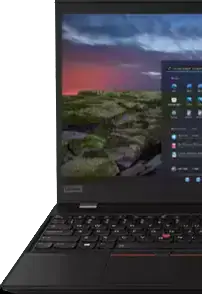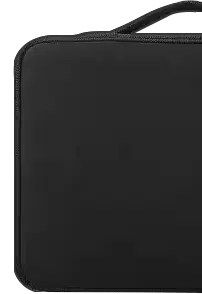What can I use to clean a printhead?
The most important thing to remember when trying to clean printheads is never to use abrasive materials or cleaning chemicals that could potentially damage the printhead. Instead, the best way to clean a printer head is with warm water and a soft cloth. Start by soaking the cloth in warm water and gently wipe away any ink or debris from the head until it is completely clean. Then, let the head dry completely before reattaching it to your printer. For stubborn blockages, you may need to use a specialized printhead cleaning fluid such as CML Printhead Cleaner. This type of cleaner can dissolve dried ink particles on contact and can be used safely on all types of modern printers. Make sure you follow instructions carefully when using this type of product, however, as it is extremely potent and should never meet your skin or eyes.
How to clean my printer head for clearer printing?
Your printer produces blurry prints. Do you want to fix that? Here are a few steps to get it cleaned up!
First, let's explore the software method, which is often the simplest. Start by accessing your computer's settings:
- Go to Settings.
- Select Bluetooth® and Devices.
- Click on Printers and Scanners.
- Choose your printer from the list.
A window will pop up, allowing you to access printer preferences and properties. From here, find the head cleaning or maintenance settings. This method uses the printer’s built-in functions to clean the print head, which is convenient and ensures you're following the manufacturer's guidelines.
If you're looking for a more hands-on approach, here's how to manually clean your printhead:
- Start by powering off your printer and removing the printhead. This will typically look like a small cartridge that slides in and out of the printer.
- Once you have removed it, set it aside on a clean surface and grab a few cotton swabs and distilled water.
- Dip the swabs in the distilled water, then use them to gently remove any ink or debris from the head.
- If there are clogged nozzles, use a paperclip to carefully clear any excess debris away before continuing with the cleaning process.
- Once you are finished, let your printhead dry completely before reattaching it back into your machine.
Lastly, make sure to check for any updates by downloading the latest driver from your manufacturer's website. This can often resolve issues with print quality and ensure your printer is running optimally.
By following these steps, you can choose the method that best suits your needs, whether it's using your printer's built-in software or a more manual approach.
How do I access printer settings to clean the printer head?
Here is the process to access printer settings for head cleaning:
- Go to Settings:Start by navigating to the settings menu on your computer. This is usually found in the taskbar or under the system options.
- Select Bluetooth® & Devices: Once you're in settings, find and click on "Bluetooth® & Devices." This section manages all external devices, including your printer.
- Choose Printers & Scanners:Within the Bluetooth® & Devices section, look for the "Printers & Scanners" option. Click on this to view a list of all connected printers.
- Pick Your Printer: From the list, select the printer you want to configure. This action will open a detailed settings window for your chosen device.
- Access Printer Preferences:In the printer settings window, look for an option labeled "Printer Preferences" or "Printer Properties." Click to open the control panel for your printer.
- Initiate Head Cleaning:Within the preferences or properties menu, there should be options for maintenance tasks. Select "Head Cleaning" or a similar option to begin the cleaning process.
By following these steps, you'll efficiently access your printer's settings to perform necessary maintenance, such as cleaning the printer head, ensuring optimal printing quality.
What are the best ways to clean printer heads?
To get the best results when cleaning your printer heads, it is important to use the right materials and techniques. Start by powering off your printer and gently removing the printhead. Set it aside on a clean surface and grab some cotton swabs and distilled water. Dip the swabs in the water, then use them to gently remove any debris from the head. For stubborn blockages, you can try using a Q-tip soaked in warm water to help loosen up any dried ink particles before continuing with the cleaning process. Once you are finished, make sure you let your printhead dry completely before reattaching it back into your printer. When all else fails, you can investigate purchasing a specialized printhead cleaning solution such as CML Printhead Cleaner that can dissolve dried ink particles on contact and be safely used on all types of printers. Lastly, do not forget to check for any updates or new drivers by downloading them from your manufacturer's website.
What does cleaning a printhead do?
Cleaning a printhead is an important step in maintaining your printer, as it helps keep it running optimally. The printhead is what carries the ink and transfers it onto paper when you print something. If it gets clogged or dirty, this can affect the quality of your prints by producing blurry images, streaks, and other imperfections. Regularly cleaning the printhead can help prevent these issues from occurring, ensuring that all of your prints come out looking great. Cleaning a printhead also helps to preserve its life span by removing any debris and dried ink particles that could otherwise cause damage if left unattended. Additionally, regular cleaning ensures that the nozzles remain free of excess ink for optimal performance. This way, you get clear crisps prints with bright colors each time you use your printer. With just a few simple steps and supplies you can ensure that your prints are always looking their best.
Where to clean a print head?
To clean your printhead, you want to start by powering off your printer and gently removing the printhead. Place it on a clean surface while you grab some cotton swabs and distilled water. Dip the swabs into the water and use them to remove any debris from the head. If there are any stubborn blockages, try using a Q-tip soaked in warm water to help loosen up any dried ink particles before continuing with the cleaning process. Once done, make sure that the printhead is completely dry before reattaching it into your printer. For those who prefer not to use water alone, there are specialized products like CML Printhead Cleaner that can be used on all types of printers for meticulous cleaning of your printheads. It is important to remember that regular maintenance and cleaning is essential for preserving your printer’s life span and ensuring good print quality every time you use it. Additionally, check for software updates or new drivers available from your manufacturer’s website to keep your machine running efficiently.
Why clean your printer head?
Cleaning your printer head is essential for keeping your printer in proper working order and ensuring that all your prints look their best. A dirty printer head can result in poor print quality and inaccurate colors, as the nozzles become clogged with dried ink and debris. By regularly cleaning the head, you can help prevent this problem from occurring. Additionally, regular maintenance of your printer head helps to extend its life span. Cleaning off any dried-up ink prevents it from solidifying and eventually damaging intricate components inside the printer. Considering how expensive some printers can be, taking just a few minutes out of your day to clean the printhead regularly can save you a lot of money in repairs or replacements down the line. Keeping your printer clean also allows it to run more smoothly by eliminating any issues that could arise due to build-up of dust or old ink.
Can I clean a printhead with water?
Cleaning your printer head with water can be an effective method, especially if there are some stubborn blockages in the printhead. To start, power off your printer and remove the printhead. Soak a Q-tip in warm water and use it to gently remove any dried ink or debris from the head. Be sure not to apply too much pressure as you do this, as excessive force can cause irreparable damage to the sensitive components inside the machine. If there is still residue remaining after wiping down with a Q-tip, you can apply more water and continue scrubbing gently to clean up the area. Afterward, make sure to dry off the printhead completely before reattaching it into your machine. This process is usually safe for all types of printers but if you are worried about damaging anything then consider using specialty products like CML Printhead Cleaner instead of water. Overall, cleaning the printhead regularly with either water or a special cleaner is an important part of maintaining your printer’s performance and prolonging its life span.
Can I manually clean a printhead?
Yes, you can manually clean your printer head if it has become clogged. The process is simple but time-consuming and should be done with caution since there are many intricate pieces inside the unit that can be easily damaged. To start, disconnect the power cord of your printer and remove the printhead from its slot. Most prints will have an access hatch on top of the unit which allows you to safely remove and replace the head without breaking any parts. Once you have extracted it, use a lint-free cloth to wipe away any dried ink or debris that may have accumulated on it. If more scrubbing is needed to eliminate stubborn dirt or grime, try using distilled water or a specialized cleaning solution designed for printers. These products are effective at removing residue while being gentle on sensitive components inside the printhead. Before attaching it back into the machine, make sure to dry off all parts thoroughly to not introduce any moisture into the system. Following this procedure regularly will ensure your printer remains in proper working order for years to come.
What is the best material to clean an inkjet printhead?
It is important to choose the right material when cleaning an inkjet printhead, as doing so can prevent damage from occurring and ensure proper functioning. The best materials for the job are lint-free cloths or swabs soaked in distilled water. Both are effective in removing dried ink and debris without scratching delicate components inside the printhead. If these options are unavailable, you can use plain tap water as an alternative. Simply soak a soft cloth in some warm water and squeeze out any excess before gently wiping down all parts of the head. However, make sure to dry off any moisture afterwards as it can cause electrical damage to sensitive components inside the unit if left unchecked. Additionally, try using specialty cleaners like CML Printhead Cleaner if you need extra help lifting away stubborn residue. By being mindful of what material you use, you can protect your printer from costly repair bills down the line.
How can I get further assistance if I'm unable to clean the printer head using the given instructions?
If you've tried all the steps to clean your printer head and are still having issues, there are several ways to get further assistance:
- Consult the User Manual:Start by checking the printer's user manual, which often includes troubleshooting tips and additional contact information for support.
- Visit the Manufacturer’s Support website:Most printer manufacturers have dedicated support sections on their websites where you can find FAQs, troubleshooting guides, and direct contact information.
- Contact Customer Service:Reach out to the customer service team via phone, email, or online chat for personalized assistance. They can guide you through advanced troubleshooting or arrange for a technician if necessary.
- Seek Help from Technical Forums:Few specific printer forums are great communities where users share tips and solutions that may not be covered in standard guides.
- Local Repair Shops:If online solutions are insufficient, consider visiting a local electronics or printer repair shop for professional help.
- Third-Party Support Services:Few third-party companies offer professional tech support and in-home repairs. Booking a service call with them might solve your issue.
By exploring these options, you’ll be sure to find the help needed to get your printer back in working order.
What should I do if I can't find the head cleaning option in my printer settings on Windows 11?
Struggling to locate the head cleaning feature on your printer settings in Windows 11 can be frustrating. Here's a step-by-step guide to help you clean your printer heads, even if the option isn't readily visible.
- Check the Printer's Manual or Software
Most printers come with a detailed manual or software that includes maintenance instructions. Look for a "support" or "troubleshooting" section that provides guidance on head cleaning.
- Access Printer Software
- Open Printer Software:Many printers have proprietary software. Try opening this software from your Start menu or system tray.
- Head Cleaning Option: Once in the software, look for a maintenance tab or tool section; that's typically where you'll find a head cleaning option.
- Use Windows Settings
- Access Devices:Go to Settings > Devices > Printers & Scanners.
- Select Your Printer:Choose your printer from the list.
- Manage Your Printer:Click Manage and look for a maintenance or services option that may lead you to head cleaning.
- Utilize Third-party Utilities
If the above options don't work, consider third-party printer management software. These programs often provide extended functionalities for printer maintenance, including head cleaning.
- Manual Cleaning
If software solutions fail, a manual head cleaning might be necessary:
- Power Off and Unplug Printer: Safety first.
- Access the Print Head:Refer to your printer’s manual to safely locate and remove the print head.
- Use Cleaning Solution:Gently clean the print head with a cleaning solution and a lint-free cloth or cotton swab.
- Reinstall and Test:Once cleaned, reinstall the print head and perform a test print to check for improvement.
Head cleaning is crucial for maintaining print quality. Whether through software adjustments or manual methods, these steps can help ensure your printer performs at its best. If you're still having trouble after trying these solutions, consider reaching out to the printer's support team for further assistance.














